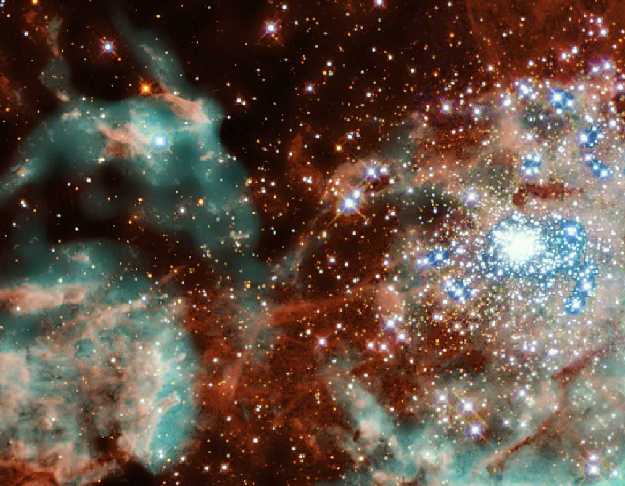Explanation: In the center of star-forming region 30 Doradus lies a huge cluster of the largest, hottest, most massive stars known. Known as R136, the cluster's energetic stars are breaking out of the cocoon of gas and dust from which they formed. This disintegrating cocoon, which fills the rest of the recently released above picture by the Hubble Space Telescope, is predominantly ionized hydrogen from 30 Doradus. R136 is composed of thousands of hot blue stars, some about 50 times more massive than our Sun. R136, also known as NGC 2070, lies in the LMC - a satellite galaxy to our own Milky Way Galaxy. Although the young ages of stars in R136 make it similar to a Milky Way open cluster, its high density of stars will likely turn it into a low mass globular cluster in a few billion years.
1999 2000 2001 2002 2003 2004 2005 2006 2007 2008 2009 2010 2011 2012 2013 2014 2015 2016 2017 2018 2019 2020 2021 2022 2023 2024 2025 |
Yanvar' Fevral' Mart Aprel' Mai Iyun' Iyul' Avgust Sentyabr' Oktyabr' Noyabr' Dekabr' |
NASA Web Site Statements, Warnings, and Disclaimers
NASA Official: Jay Norris. Specific rights apply.
A service of: LHEA at NASA / GSFC
& Michigan Tech. U.
|
Publikacii s klyuchevymi slovami:
globular cluster - R 136 - 30 Doradus - Sharovoe skoplenie
Publikacii so slovami: globular cluster - R 136 - 30 Doradus - Sharovoe skoplenie | |
Sm. takzhe:
Vse publikacii na tu zhe temu >> | |
